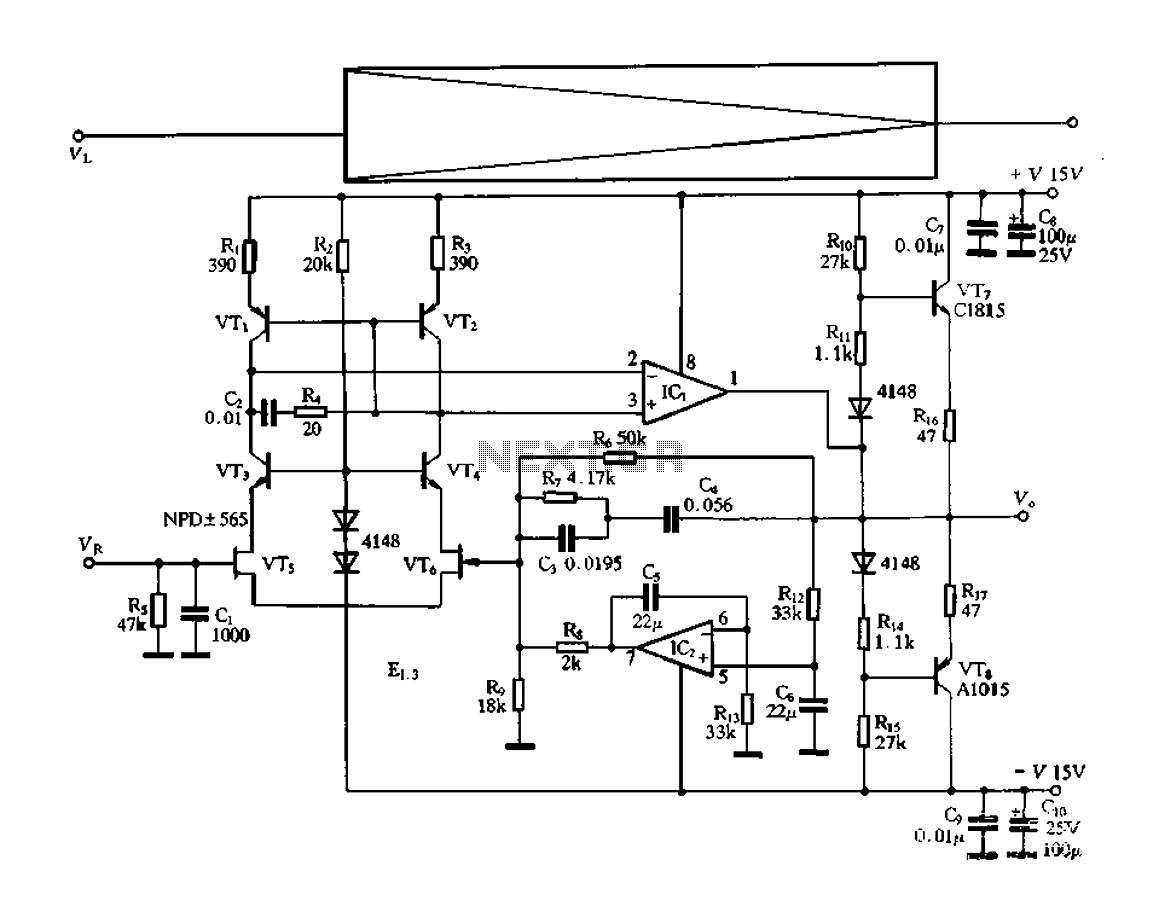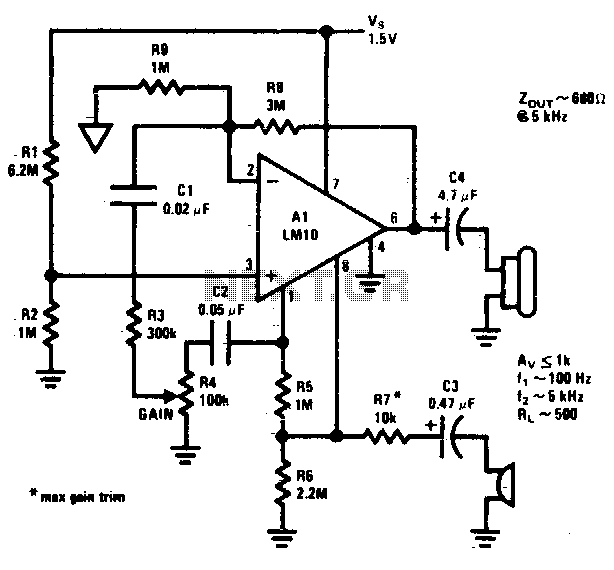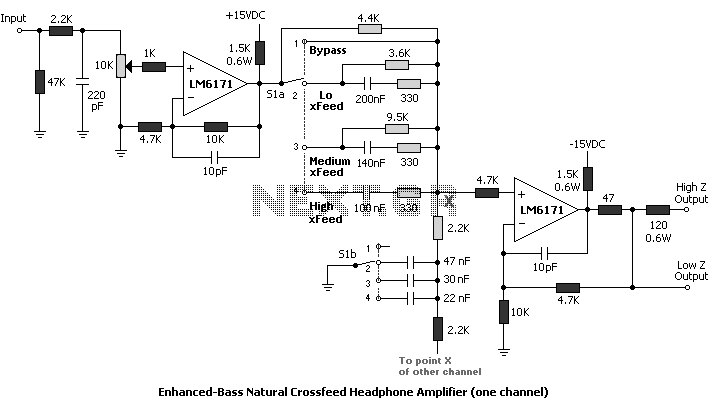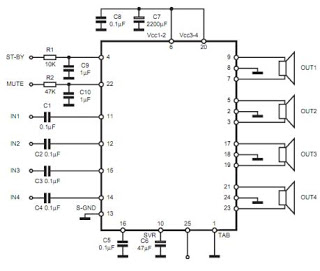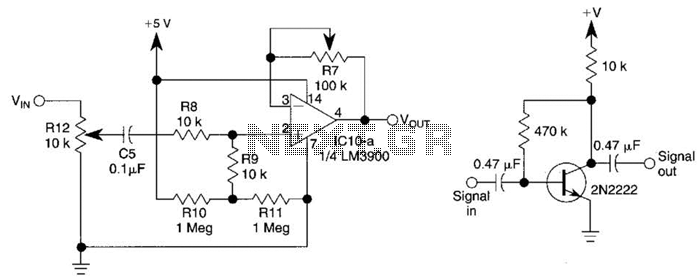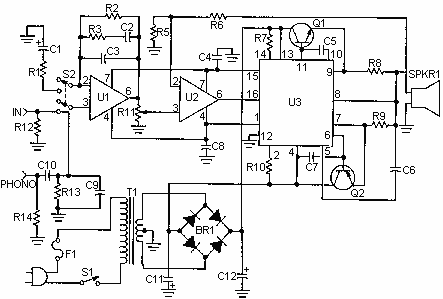
Programable amplifier
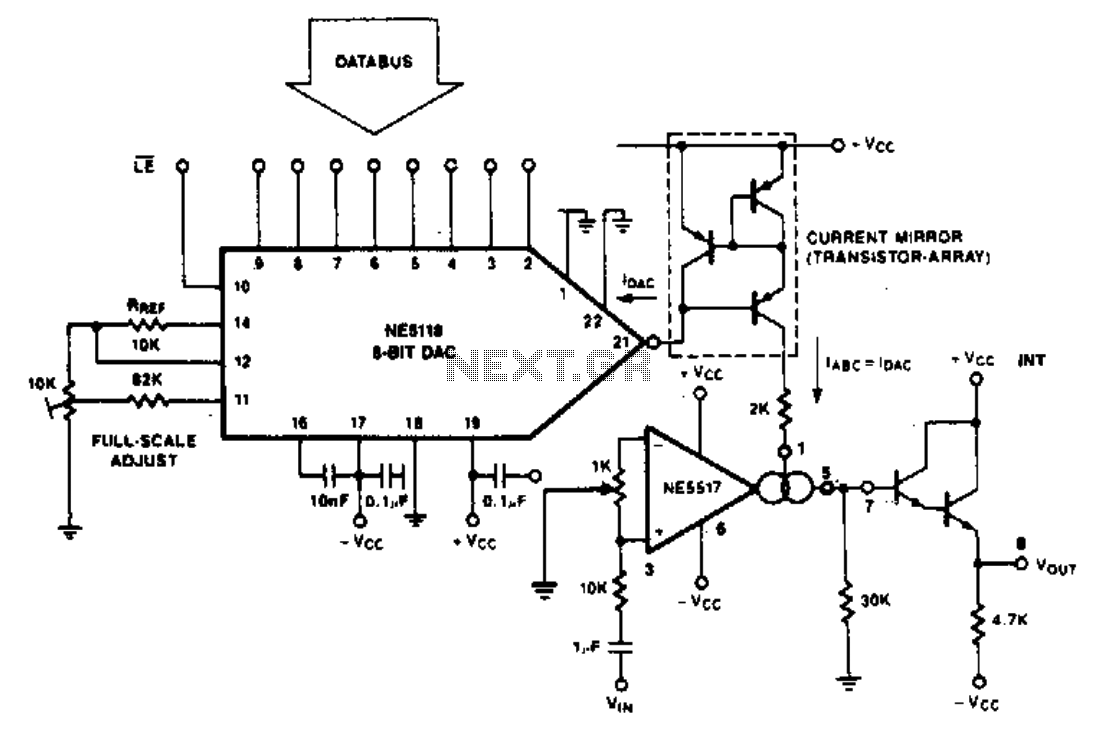
The purpose of the following application is to demonstrate how the NE5517 operates in conjunction with a DAC. The application utilizes the NE5118, an 8-bit DAC with current output, featuring an input register that makes this device fully micro-compatible. The circuit comprises three functional blocks: the NE5118, which generates a control current corresponding to the applied data byte, a current mirror, and the NE5517.
The NE5517 is a versatile integrated circuit designed for signal processing applications, particularly in analog systems. It is often employed in conjunction with digital-to-analog converters (DACs) to facilitate the conversion of digital signals into corresponding analog currents. In this specific application, the NE5118 serves as the DAC, translating an 8-bit digital input into a proportional analog output current.
The first functional block, the NE5118, operates by generating a control current that is directly proportional to the digital data byte received. This current output is critical for driving subsequent components in the circuit. The NE5118's architecture includes an input register that ensures compatibility with microcontrollers, allowing for seamless integration into digital systems.
The second functional block is the current mirror, which is essential for replicating the output current from the NE5118. The current mirror ensures that the control current generated by the DAC is accurately reproduced and can be used to drive other components or circuits without significant loss of signal integrity.
Finally, the NE5517 processes the output from the current mirror, providing further signal conditioning or amplification as required by the application. This integration of the NE5517 with the DAC and current mirror allows for precise control over the analog output, making the circuit suitable for various applications, including signal modulation, analog signal generation, and other signal processing tasks.
In summary, the circuit showcases a practical implementation of the NE5517 with the NE5118 DAC, emphasizing the importance of each functional block in achieving accurate and reliable signal conversion from digital to analog form. This design exemplifies the synergy between digital and analog components in modern electronic systems.The intention of the following application shows how the NE5517 works in connection with a DAC. In the application, the NE5118 is used—an 8-bit DAC with current output—its input register making this device fully µ-compatible. The circuit consists of three functional blocks. the NE5118 which generates a control current equivalent to the applied data byte, a current mirror, and the NE5517.
The NE5517 is a versatile integrated circuit designed for signal processing applications, particularly in analog systems. It is often employed in conjunction with digital-to-analog converters (DACs) to facilitate the conversion of digital signals into corresponding analog currents. In this specific application, the NE5118 serves as the DAC, translating an 8-bit digital input into a proportional analog output current.
The first functional block, the NE5118, operates by generating a control current that is directly proportional to the digital data byte received. This current output is critical for driving subsequent components in the circuit. The NE5118's architecture includes an input register that ensures compatibility with microcontrollers, allowing for seamless integration into digital systems.
The second functional block is the current mirror, which is essential for replicating the output current from the NE5118. The current mirror ensures that the control current generated by the DAC is accurately reproduced and can be used to drive other components or circuits without significant loss of signal integrity.
Finally, the NE5517 processes the output from the current mirror, providing further signal conditioning or amplification as required by the application. This integration of the NE5517 with the DAC and current mirror allows for precise control over the analog output, making the circuit suitable for various applications, including signal modulation, analog signal generation, and other signal processing tasks.
In summary, the circuit showcases a practical implementation of the NE5517 with the NE5118 DAC, emphasizing the importance of each functional block in achieving accurate and reliable signal conversion from digital to analog form. This design exemplifies the synergy between digital and analog components in modern electronic systems.The intention of the following application shows how the NE5517 works in connection with a DAC. In the application, the NE5118 is used—an 8-bit DAC with current output—its input register making this device fully µ-compatible. The circuit consists of three functional blocks. the NE5118 which generates a control current equivalent to the applied data byte, a current mirror, and the NE5517.
